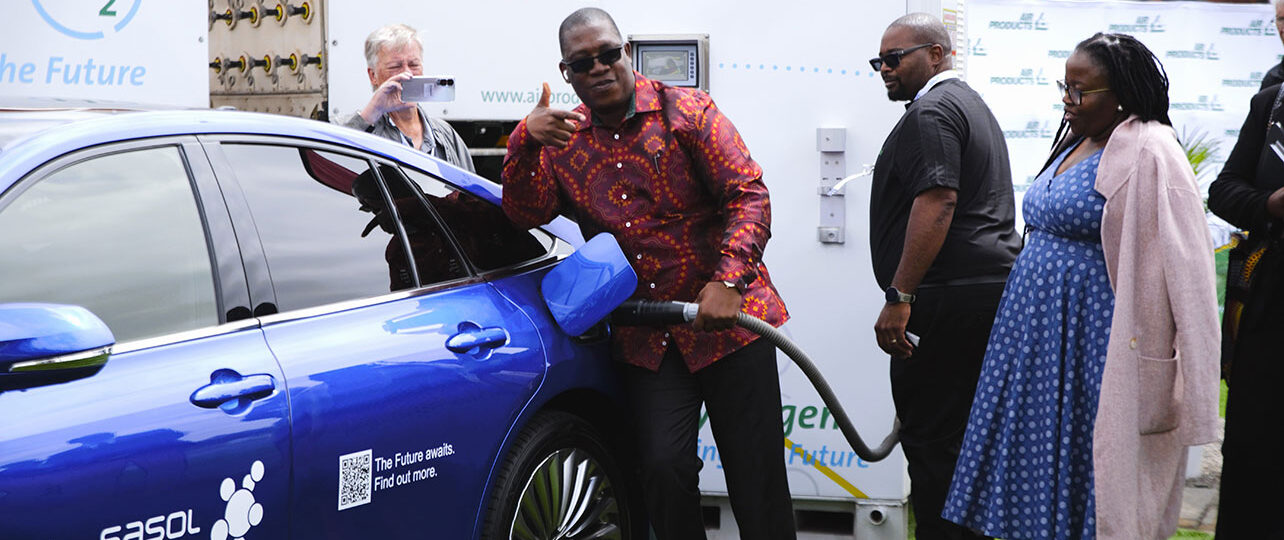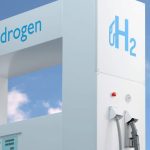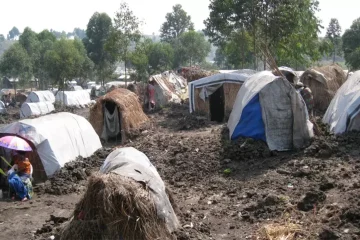NAMIBIA has begun construction works on what could potentially be Africa’s inaugural public green hydrogen refuelling station at Walvis Bay, along the western coast of Namibia. In a statement released at the end of September, the company behind the venture said the station would provide fuel for commercial vehicles.
The station would “cater specifically to trucks and heavy-duty applications, marking a significant step towards bolstering the green hydrogen infrastructure,” the statement from Cleanergy Solutions Namibia, a joint venture of Ohlthaver & List (O&L) Group and CMB.TECH, said.
The station includes a 10-hectare solar park complemented by a hydrogen production facility equipped with a 5-megawatt Proton Exchange Membrane electrolyzer and a 5-megawatt-hour battery.
In a press statement dated September 28, the company announced that the public hydrogen refuelling station would show off green hydrogen’s potential in the region.
“It will prove that green hydrogen can be produced efficiently and cheaply with renewable African sun,” Alexander Saverys, CEO of CMB.TECH stated.
The station is anticipated to be fully operational by mid-2024 and is to also include a Hydrogen Academy to educate and train young Namibians on hydrogen technology and its wide-ranging applications.
Announcements of major green hydrogen projects in Africa have been on a growth trajectory as the continent attracts a diverse array of global investors eager to forge partnerships with African governments.
This has resulted in a proliferation of green hydrogen production planning.
According to ‘The State of African Energy 2Q 2023 Outlook’ recently released by The African Energy Chamber (AEC), Africa’s current announced hydrogen capacity stands at approximately 125 gigawatts (GW). This signifies a notable milestone, as green hydrogen pipeline capacity has now surpassed the announced solar capacity on the continent, placing it second only to wind in the realm of renewables.
Noteworthy contributors to this capacity surge are Egypt, Mauritania, South Africa, Morocco, Namibia, and Djibouti, which collectively formed the Africa Green Hydrogen Alliance (AGHA) in 2022.
The transport sector in Africa accounts for about one-third of the continent’s total energy-related CO2 emissions, or 346 million metric tons (Mt) of CO2, according to the IEA.
Apart from Namibia, South Africa’s energy major, Sasol, recently showcased how close that country is to commercializing green hydrogen.
At the Smart Mobility Africa Summit 2023 in Johannesburg, held between October 1 and 4, the JSE-listed energy and chemical group unveiled an on-road hydrogen mobility pilot project. This initiative featured a second-generation Toyota Mirai fuel cell electric vehicle (FCEV) fueled with hydrogen produced by Sasol, which was used to transport several VIPs around a test track.
In a statement, Andrew Kirby, President and CEO of Toyota SA Motors, emphasized that the primary challenge in commercializing the hydrogen mobility ecosystem in South Africa lies in the associated costs.
“Initially, the Pretoria-Johannesburg region could be well-suited, as these are high-volume routes that could justify investment in hydrogen refuelling infrastructure,” he explains.
He envisages the expansion of the hydrogen ecosystems along major long-haul routes, such as the N3 between Johannesburg and Durban, and subsequently extending into other African countries.
Sasol has in the past outlined plans to supply hydrogen to the transport sector by 2024, marking a pivotal milestone in the integration of green hydrogen into Africa’s transportation landscape.
Furthermore, green hydrogen is slated to play a pivotal role in the decarbonization of the mining sector in Africa.
In 2022, Anglo-American introduced the nuGen™, a hydrogen-powered ultra-class mine haul truck, on a pilot basis. The plan is to retrofit 40 diesel-powered ultra-class haul trucks at Mogalakwena to run on hydrogen. This initiative is poised to yield significant reductions in emissions, as haul trucks currently contribute up to 80% of diesel emissions at Anglo-American mine sites according to the company website.
Beyond mining, other energy-intensive transportation sectors, particularly maritime logistics, are actively positioning green hydrogen from Africa for future applications.
Notably, Maersk, a prominent maritime logistics company, has this week unveiled plans to establish a hydrogen-to-marine fuel plant in Egypt’s Suez Canal Economic Zone.
This ambitious US$3 billion project will be a collaborative effort with the Egyptian government and is projected to produce up to 300,000 tonnes of green methanol annually by 2027 or 2028 when it is slated to become operational.
In an interview with engineeringnews.co.za, Laurens Cloete, a senior consultant at the Rebel Group, expounded on the viability of green hydrogen in decarbonizing Africa’s transport sector.
“Hydrogen also has rapid filling times, can deal with high payloads, and provides attractive ranges, making it a promising fuel for transport logistics,” Cloete explained.














